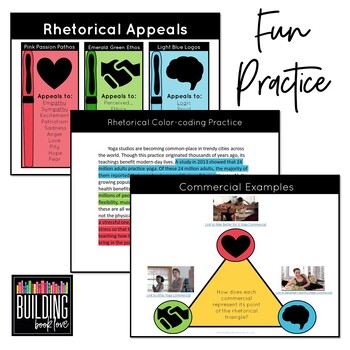Rhetorical Triangle : Persuasive Techniques : Ethos , Pathos , Logos : Rhetoric
- PPTX
What educators are saying
Description
Teach rhetorical devices through movement and color-coding! This rhetorical appeal lesson will help students understand Aristotle's rhetorical triangle through a kinesthetic strategy and then will give students a highlighting technique to apply to any rhetorical analysis!
No matter the rhetorical writing prompt, reading analysis, or propaganda scrutiny, this color-coding activity proves to be a great way to analyze rhetorical appeals. It works well with English, history, and speech classes. This rhetorical activity is also a fantastic way to incorporate self-assessment in argumentative writing!
You will get:
⭐A movement strategy to teach the rhetorical triangle
⭐A presentation to teach rhetorical devices
⭐A printable reference graphic for rhetorical appeals
⭐An example paragraph with each appeal and answer key
⭐Three commercial links with persuasive techniques
⭐An editable slide for further rhetorical examples
✅ Use digitally or print!
Related Products





